
The 91st Infantry Division (famously nicknamed as the "Wild West Division" with a "Fir Tree" as its Division insignia to symbolize its traditional home of the Far West) is an infantry division of the United States Army that fought in World War I and World War II. From 1946 until 2008, it was part of the United States Army Reserve. It was briefly inactivated from 2008 until 2010 when it was elevated back to a division size element as the 91st Training Division (Operations).

The Pancho Villa Expedition—now known officially in the United States as the Mexican Expedition, but originally referred to as the "Punitive Expedition, U.S. Army"—was a military operation conducted by the United States Army against the paramilitary forces of Mexican revolutionary Francisco "Pancho" Villa from March 14, 1916, to February 7, 1917, during the Mexican Revolution of 1910–1920.
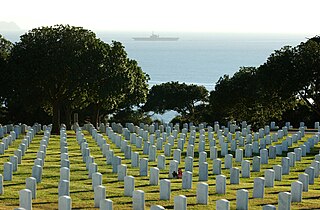
Fort Rosecrans National Cemetery is a federal military cemetery in the city of San Diego, California. It is located on the grounds of the former Army coastal artillery station Fort Rosecrans and is administered by the United States Department of Veterans Affairs. The cemetery is located approximately 10 miles (16 km) west of Downtown San Diego, overlooking San Diego Bay and the city from one side, and the Pacific Ocean on the other. Fort Rosecrans is named after William Starke Rosecrans, a Union general in the American Civil War. The cemetery was registered as California Historical Landmark #55 on December 6, 1932. The cemetery is spread out over 77.5 acres (31.4 ha) located on both sides of Catalina Blvd.

The 1st Cavalry Regiment is a United States Army regiment that has its antecedents in the early 19th century in the formation of the United States Regiment of Dragoons. To this day, the unit's special designation is "First Regiment of Dragoons". While they were the First Regiment of Dragoons another unit designated the 1st Cavalry Regiment was formed in 1855 and in 1861 was re-designated as the 4th Cavalry Regiment. The First Dragoons became the 1st Cavalry Regiment since they were the oldest mounted regiment.

California's involvement in the American Civil War included sending gold east to support the war effort, recruiting volunteer combat units to replace regular U.S. Army units sent east, in the area west of the Rocky Mountains, maintaining and building numerous camps and fortifications, suppressing secessionist activity and securing the New Mexico Territory against the Confederacy. The State of California did not send its units east, but many citizens traveled east and joined the Union Army there, some of whom became famous.

The Wisconsin Army National Guard ("Guard") has dual state and federal roles, and is jointly funded and maintained by both governments. Its federal mission is to provide trained units to the United States Army in time of war or national emergency. Its state mission is to help civil authorities protect life and property and preserve peace, order, and public safety in times of natural or human-caused emergencies. The governor, who is the commander in chief of the Guard when it is not activated for federal service, appoints the adjutant general who directs the Wisconsin Department of Military Affairs, of which the Guard is a part. Members of the National Guard are typically part-time soldiers who attend unit drills one weekend per month and serve a two-week annual tour of active duty. All officers and enlisted personnel must meet the same physical, education, and other eligibility requirements as members of the active-duty services.
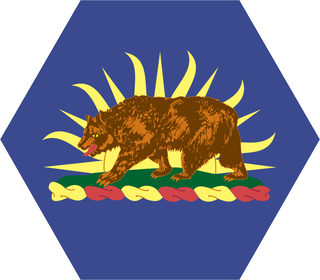
The California Army National Guard is one of three components of the California National Guard, a reserve of the United States Army, and part of the National Guard of the United States. The California Army National Guard is composed of 18,450 soldiers. Nationwide, the Army National Guard comprises approximately one half of the US Army's available combat forces and approximately one third of its support organization. National coordination of various state National Guard units are maintained through the National Guard Bureau.

Camp Bullis Military Training Reservation is a U.S. Army training camp comprising 27,990 acres (113.3 km2) in Bexar County, Texas, USA, just northwest of San Antonio. Camp Bullis provides base operations support and training support to Joint Base San Antonio. The camp is named for Brigadier General John L. Bullis.

Camp Lockett was a United States Army military post located in Campo, California, east of San Diego, and north of the Mexican border. Camp Lockett has historical connections to the Buffalo Soldiers due to the 10th and 28th Cavalry Regiments having been garrisoned there during World War II. It was named in honor of Colonel James R. Lockett who fought in the Spanish–American War, Philippine Insurrection, and the Punitive Expedition. There was an active preservation effort underway with long-term plans of creating the 'Camp Locket Historic District' in the National Register of Historic Places, which ended due to private property concerns. In 2009 it was designated as a California Historical Landmark, and there are plans to create a county park out of the majority of its former area.
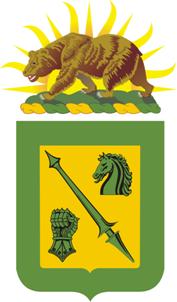
The 18th Cavalry Regiment is a parent cavalry regiment of the United States Army.

The Department of California was an administrative department of the United States Army. The Department was created in 1858, replacing the original Department of the Pacific, and it was ended by the reorganizations of the Henry L. Stimson Plan implemented in February 1913. As with the preceding organization, headquarters were in San Francisco. Its creation was authorized by General Orders, No. 10, of the War Department, Adjutant-General's Office, September 13, 1858.
Palm City is a neighborhood in the southern section of San Diego. Its neighbors are Otay Mesa West to the south and east, Egger Highlands and Nestor to the west, and Chula Vista to the north. It also serves as a gateway to the beach cities of Imperial Beach, and Coronado, by way of the Silver Strand isthmus, due to it being where California State Route 75 meets Interstate 5. Major thoroughfares include Coronado Avenue, Hollister Street, Beyer Boulevard, and Palm Avenue.
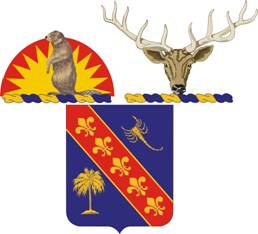
The 148th Field Artillery Regiment is a Field Artillery Branch regiment of the Army National Guard.
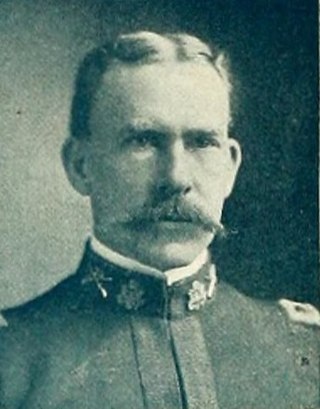
Frank Herman Albright was a career officer in the United States Army. A veteran of the Spanish–American War, Philippine–American War, World War I, he attained the rank of brigadier general, and was most notable for his First World War command of the 151st Infantry Brigade and the 56th Infantry Brigade.

The 323rd Cavalry Regiment was a cavalry unit of the United States Army during the interwar period. The unit was activated as a California, Washington, and Oregon Organized Reserve unit during the interwar period, although it was later relocated entirely to California. It was converted into a signal aircraft warning regiment after the United States entered World War II.

John Fisher Preston Jr. was an American army officer who rose to the rank of Inspector General of the United States Army. His first conflict was the Spanish–American War serving in the 7th Infantry, and fighting in the Battle of San Juan Hill and Siege of Santiago. For his service in the war, Preston received the Silver Star. He then spent around a decade serving at various forts in the Philippines and across the United States. Preston was involved in the Quartermaster Corps and the Pay Department until the outbreak of World War I, serving a couple of years in France. He attended various Army schools until 1923, and had various leadership positions in the Army over the next fifteen years, culminating in appointment as Inspector General in 1931. After a four-year tenure and brief stationing at Fort Sam Houston, he retired from the army in 1936 and entered the banking industry in San Antonio. He died on July 1, 1960.
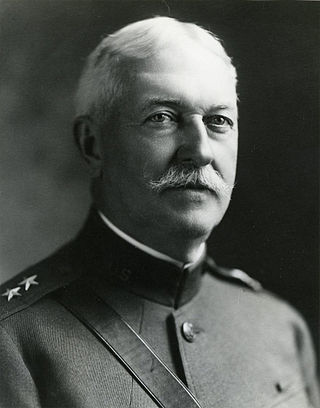
Frederick S. Strong was a career officer in the United States Army. He attained the rank of major general, and was a veteran of the American Indian Wars, Spanish–American War, and World War I. Strong was best known for his command of the Hawaiian Department from 1916 to 1917 and the 40th Division during World War I.
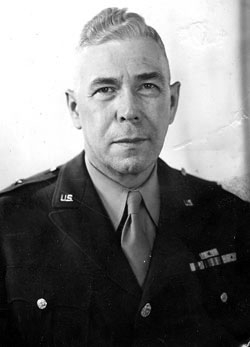
Jesse Amos Ladd was a United States Army general who served in World War I and World War II.
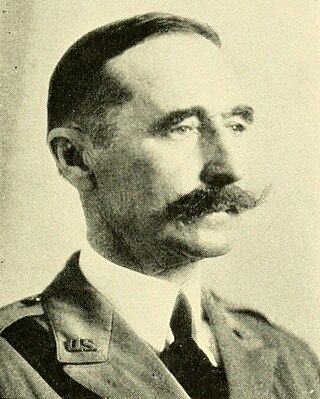
Walter C. Short was a career officer in the United States Army. A veteran of the Spanish–American War, Pancho Villa Expedition, and World War I, he attained the rank of brigadier general. Short was most notable for the organization and training of several units during the first World War, and his command of the 1st Cavalry Division between World War I and World War II.
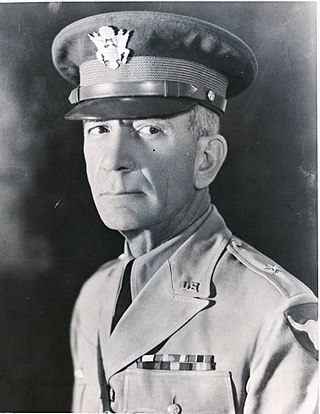
Casper H. Conrad Jr. was a career officer in the United States Army. A veteran of the Spanish–American War, Philippine–American War, Pancho Villa Expedition, and World War I, he served from 1895 to 1936 and attained the rank of brigadier general.


















